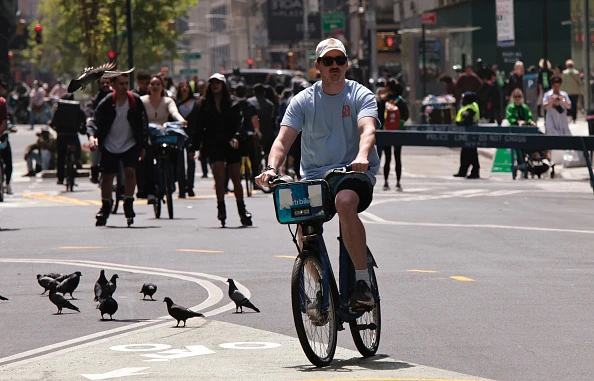
As cities strive to alleviate congestion and promote sustainability, public transportation, walking, and biking have emerged as favourable car-free commuting alternatives. This is on everyone’s mind for today’s Dump the Pump Day.

Now, a recent study by CoWorking Cafe that analysed 331 US cities, revealed the top locations where residents can commute with the most ease without relying on personal vehicles. These cities boast good public transportation infrastructure, high station densities and alternative commuting options, offering residents hassle-free and eco-friendly commutes.
Boston and Newark lead the way as car-free cities
The study identified Boston and Newark as the best cities for car-free living due to their reliable public transportation systems and extensive network of stations.
Boston’s 28% public transit usage, the third-highest among all cities analysed, is supported by its dense concentration of bus, metro and train stops. The city’s public transit network, with minimal breakdowns and mechanical failures, further reinforces its appeal to residents.
Newark, a major transportation hub with a well-integrated transit system, offers nearly ten stations per square mile. With approximately 20% of its population relying on metros, buses, trains, taxis, motorcycles or similar vehicles, Newark provides the convenience of alternative modes of transportation for commuters within its infrastructure.
New York City’s public transit dominance
New York City secured the third spot on the list, boasting the highest percentage of residents using public transportation among all 331 cities analysed for the report. In fact, nearly half of New Yorkers rely on the city’s extensive subway and bus network for their daily commutes.
With more than 16,000 stops across the city and more than two stations per square mile, New York City’s accessibility is unmatched by other cities in the report. However, the relatively higher price of public transportation, with an average adult fare of $4.36, remains a challenge for its residents.
Washington, DC: a hub of coworking
Washington, DC, stands out with its 27% public transit usage and a significant proportion of residents opting for walking or biking. The city’s appeal to workers is further enhanced by its high density of coworking spaces, facilitating flexible work arrangements. The availability of such spaces near residential areas helps reduce commuting distances, regardless of the mode of transportation used.
San Francisco: multimodal commuter benefits
San Francisco ranks fifth on the list, with nearly 28% of its population utilising public transportation methods. The city’s comprehensive infrastructure caters to diverse commuting preferences, as evidenced by the 4% of residents choosing taxis or motorcycles. Furthermore, San Francisco’s extensive network of bike lanes facilitates environmentally friendly commutes and grants residents easy access to various parts of the city.
Other cities emphasise car-free options
Philadelphia earns the sixth spot, leveraging its robust public transportation system and impressive station density. Seattle, in seventh, has a convenient public transportation system alongside a culture that encourages walking, benefiting from its numerous parks and pet-friendly environment.
Oakland plays a significant role in the Bay Area's connectivity, offering swift access to surrounding areas through its Mass Transit Oakland system.
Madison, Wisconsin, embraces pedestrian and bike commuting despite its winter climate, with well-maintained bike lanes and a notable percentage of residents choosing to walk.
Pittsburgh concludes the top ten, prioritising walkability and offering a high density of coworking spaces for flexible work arrangements.
[Read more: EV infrastructure: Which US cities are best placed to go electric?]






